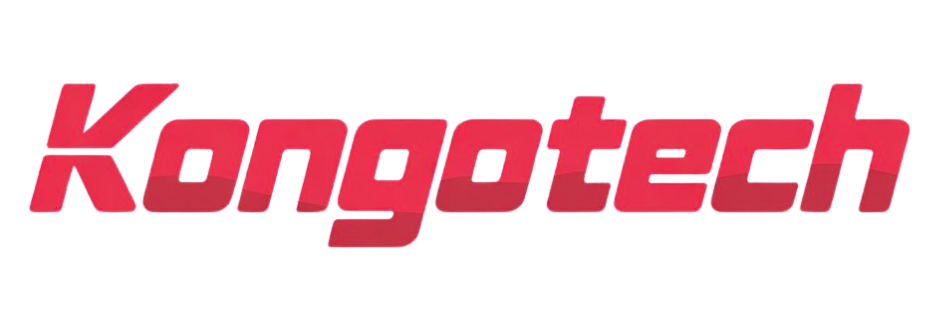If you’ve ever wondered why your old-school payroll app behaves predictably while a modern recommendation engine seems almost “intuitive,” you’re already touching the heart of the debate: AI vs. traditional software. They’re both software, but they’re built on different assumptions about how to solve problems. One follows rules you write. The other learns rules from data. That single difference cascades into contrasts in architecture, development, testing, performance, explainability, cost, and long-term strategy. Let’s unpack it—clearly and candidly.
1) What We Mean by “Traditional Software” vs. “AI”
Traditional software (deterministic systems) is software that executes explicit, human-authored instructions. If you can write the rules down (“if this, then that”), a deterministic program will do precisely—and only—what you’ve specified. Examples: accounting systems, CRUD apps, ERP modules, inventory tracking, and most business logic–heavy web backends.
AI software (probabilistic/learning systems) uses models—typically machine learning or deep learning—that infer patterns from data rather than relying solely on hand-coded rules. Instead of telling it exactly what to do, you provide examples, objectives, and constraints, and the model learns a function that maps inputs to outputs. Examples: spam filters, product recommenders, fraud detection, speech and image recognition, chatbots, and route optimizers.
Core distinction:
- Traditional: “Program = Rules + Data → Answers”
- AI: “Program (Model) + Data + Training → Rules (learned) → Answers”
2) Architecture: Pyramids vs. Ecosystems
Traditional software often resembles a pyramid of modules: UI → business logic → database. Dependencies are explicit, interfaces are formal, and data mostly supports the logic.
AI systems look more like ecosystems: data pipelines, feature stores, model training infrastructure, experiment tracking, model registry, inference services, monitoring for data drift, and feedback loops that capture outcomes and retrain the model. In other words, data flows are first-class citizens—not just storage.
Key architectural components you’ll find in AI systems:
- Data ingestion & labeling: ETL/ELT pipelines, annotation tools
- Feature engineering: transformations, normalization, embeddings
- Training/inference infrastructure: GPUs/TPUs, distributed training, low-latency serving endpoints
- Experimentation & governance: versioning, lineage, audit trails, reproducibility
- Continuous training (CT) / continuous evaluation (CE): update models as data shifts
Traditional stacks can be built and shipped once, then patched. AI stacks must keep learning or they degrade as the world changes.
3) Development Lifecycle: Spec → Build vs. Hypothesize → Experiment
A classic software project starts with a specification. Engineers implement features, write unit/integration tests, push to QA, then deploy. The goal is conformance: does the program obey the spec?
An AI project starts with a hypothesis: “This model can classify churners with AUC ≥ 0.85.” Data scientists iterate across algorithms, architectures, and hyperparameters; they split datasets into training/validation/test; they track metrics; and they refine features. The goal is performance: does the model meet the metric under real-world conditions?
Implication: The AI lifecycle is experiment-heavy and metric-driven. Success depends on data quality, the representativeness of samples, and alignment between the objective function and business goals. Traditional development is requirements-heavy and logic-driven.
4) Data Dependence: Inputs Are the Product
Traditional software treats data as fuel: necessary but not formative. Bad data might cause errors, but it doesn’t usually change the logic.
AI treats data as DNA: the model’s behavior is shaped by the data. Poorly labeled, biased, or unrepresentative data will produce poor or biased predictions—no matter how elegant the model. That’s why AI teams invest in:
- Data curation and labeling quality
- Bias and fairness checks
- Outlier detection and anomaly handling
- Data augmentation and synthetic data (where appropriate)
In AI, data governance is not optional; it’s existential.
5) Performance & Scalability: Throughput vs. Latency Under Uncertainty
Traditional software performance focuses on resource usage and throughput: can we handle N requests/second with low latency? You scale horizontally/vertically, cache results, and optimize queries.
AI brings two extra dimensions:
- Model complexity vs. latency: Larger models can be more accurate but slower and costlier. You may need quantization, distillation, or specialized accelerators to keep response times acceptable.
- Statistical performance: Precision, recall, F1, AUC, MAPE—quality metrics matter as much as speed. It’s possible to be fast yet useless if the model’s wrong too often.
Edge vs. cloud: Traditional code can run anywhere; AI inference may prefer the cloud (for compute) or the edge (for privacy/latency). Choices affect cost, data flows, and user experience.
6) Reliability, Testing, and Explainability: Binary Tests vs. Probabilistic Guarantees
In traditional software, unit tests and integration tests are the backbone. Behavior is deterministic, so coverage is king.
In AI, you can’t unit-test “truth” the same way because outputs are probabilistic. You still test pipelines and code deterministically, but model evaluation is statistical: performance distributions, confidence intervals, A/B tests, shadow mode deployments, and continual monitoring for drift (when live data diverges from training data).
Explainability:
- Traditional: easy—point to the code path.
- AI: harder—especially with deep models. You may need XAI tools (feature importance, SHAP/LIME, attention maps) to satisfy regulators, auditors, and stakeholders.
Safety & guardrails: Generative and predictive models can produce unexpected outputs. Mitigations include:
- Input/output filters
- Human-in-the-loop review for high-risk actions
- Policy/rule layers wrapped around the model
- Fallbacks to deterministic logic when confidence is low
7) Cost, Tooling, and Team Structure: CAPEX vs. OPEX and a New Skill Mix
Traditional systems cost centers: engineering hours, licenses, cloud, maintenance. Predictable.
AI adds:
- Compute for training/inference (potentially spiky and GPU-hungry)
- Data operations: labeling, cleaning, governance
- Experimentation infrastructure: MLOps platforms
- Monitoring for drift and model health: continuous cost
Team composition shifts from software engineers + QA to data scientists, ML engineers, data engineers, platform engineers, and domain experts working together. Tooling expands—feature stores, experiment trackers, vector databases, model registries—alongside standard DevOps.
ROI frame: Traditional software delivers ROI by automating deterministic tasks. AI delivers ROI by improving decisions, reducing friction, personalizing experiences, or unlocking new products—but requires patience for data pipelines and iteration.
8) Use Cases: When Each Approach Shines
Best for Traditional Software
- Regulatory-grade, rule-defined workflows (e.g., tax calculation engines where the law is explicit)
- Transaction processing (payments clearing, ledger updates)
- CRUD-heavy business systems with stable logic
- Systems where predictability and auditability trump fuzzy optimization
Best for AI
- Pattern recognition at scale (fraud, anomaly detection, demand forecasting)
- Perception tasks (vision, speech, NLP)
- Personalization and ranking (recommendations, search relevance)
- Generative experiences (content drafting, summarization, code assist)
- Complex optimization with many variables (routing, pricing, inventory)
Hybrid sweet spot (very common):
Wrap deterministic logic around AI. Use rules to enforce safety, compliance, and hard constraints; use AI to score, rank, or infer where rules would be brittle. For example, a support triage system might use AI to classify intent but rely on rules to ensure escalation pathways remain compliant.
9) Governance, Compliance, and Risk Management
Traditional systems already fit familiar governance models: change control, code review, segregation of duties.
AI governance extends this with:
- Model cards & documentation: what the model does, trained-on data, known limitations
- Bias and fairness assessments
- Data lineage and consent tracking (GDPR/CCPA and beyond)
- Human oversight for high-risk domains (finance, healthcare, hiring)
- Incident playbooks for model failures or drift
Key mindset: treat models like living artifacts. You’re not just shipping code; you’re shipping behavior that evolves as data and context change.
10) Choosing the Right Path: A Practical Decision Checklist
Ask these questions up front:
- Can you write down the rules?
- If yes and they won’t change often, traditional may be simpler and safer.
- Is the environment noisy, ambiguous, or high-dimensional?
- If yes, AI likely adds value.
- Do you have quality data and a way to improve it continuously?
- If no, prioritize data readiness before betting on AI.
- What are the stakes of being wrong?
- High stakes or regulated domains may need hybrid designs with human-in-the-loop and strict guardrails.
- Latency, scale, cost constraints?
- Factor in inference cost, SLAs, and model compression strategies.
- Explainability requirements?
- If decisions must be fully interpretable, favor simpler models or deterministic rules with AI as an advisory signal.
You might also like: What Is Kongotech org? Complete Guide
11) The Road Ahead: Convergence, Not Competition
The future isn’t AI vs. traditional—it’s AI + traditional. We’re seeing:
- Rules as guardrails; AI as the brain for ranking, classification, and generation
- Composite architectures where deterministic validators post-check AI outputs
- Auto-generated code from models that engineers then harden and govern
- Smaller, specialized models deployed at the edge for privacy and latency
- Enterprise MLOps maturity: standardized model registries, lineage, and policy
As tools improve, organizations will treat models like first-class software artifacts—tested, versioned, and audited alongside code.
Conclusion
- Traditional software: best when you can codify rules, need predictability, and must audit every path. Lower data risk, clearer testing, often cheaper to operate.
- AI software: best when patterns are too complex for hand-written rules, personalization matters, or perception/understanding is required. Higher data demands, probabilistic outputs, and ongoing monitoring costs—but outsized upside where uncertainty reigns.
- Most winning systems are hybrids, using deterministic logic to enforce boundaries and AI to optimize within them.
Choose the paradigm that matches your problem’s nature, your data’s reality, and your tolerance for probabilistic behavior. If you can write the rules, do it. If the rules hide in the data, let the model learn them—then wrap it with the guardrails your business deserves.


